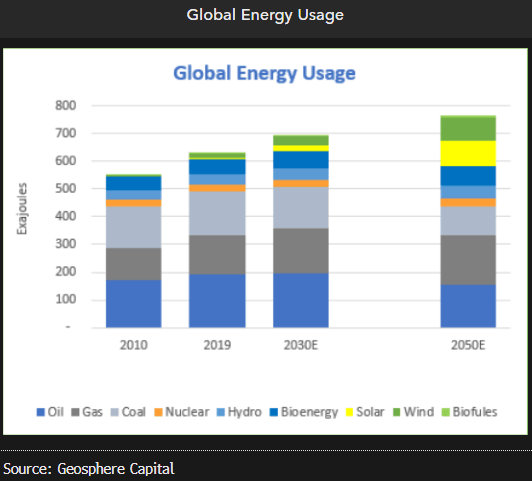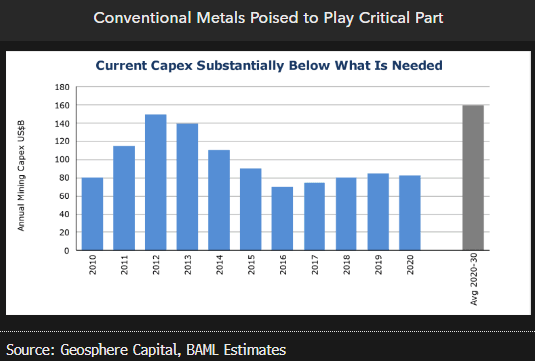A sensible energy transition needs less ESG focus, more realism
This analysis is by Bloomberg Intelligence Head-Hedge Funds and Private Markets Analyst Gaurav Patankar. It appeared first on the Bloomberg Terminal.
Monetizing the energy transition requires a value-chain approach in energy and metals and the realization that certain fossil fuels (such as natural gas) and metals (copper) aren’t going anywhere fast and are key to the shift. We met veteran energy investor Arvind Sanger of Geosphere Capital to discuss the transition and his belief that more realism and less ESG can drive sustained energy-sector alpha.
Political economics underscore key oil and coal
Conventional resources will be needed for a long time during the energy transition, a reality the world is getting used to. Our conversation with Geosphere points to stable oil demand through the end of this decade, with natural gas and nuclear playing a role as transitional fuels amid growing end-market demand. More importantly, supply-demand imbalances are challenging the environmental social and governance (ESG) thesis in various situations, and with the overlay of political economics, oil and coal they don’t appear to going anywhere in a hurry.

Geopolitics, friendly shores central to energy shift
Energy security will need the ability to locate sources, along with processing facilities, in friendly regions. Though structural underpinnings such as capital discipline and free-cash-flow yields are generally supportive of the sector, some capital decisions by companies will be influenced by political economics and not by return-on-capital investment alone. Understanding such geo-strategic nuance and marrying that with bottom-up fundamentals will thus be key for sustainable alpha creation within the energy continuum.

Conventional metals are key in energy transition
Steel, copper and aluminum are critical to a successful energy transition since various clean-energy technologies — such as hydro, nuclear, solar, hydrogen, wind and other sources — are meaningfully dependent on their availability. Wind and solar generation requires 5x the copper that thermal-power creation generation does and EVs/charging infrastructure need over 3x vs. non-electric vehicles.
What’s more interesting, according to Geosphere, is that between resource nationalism (with about 40% of copper coming from Chile and Peru, for example) and green social agendas, current capital spending on mining is way below what’s needed. This creates idiosyncratic stock-picking opportunities for a macro-aware fundamental investor taking a cross-continuum approach to the theme.

Mining capex must double to meet energy-transition demand
Copper demand is accelerating, while the average metal grade is falling mainly because of crimped mining capital spending, driven by resource nationalism, ESG concerns, corporate balance sheets and other factors. The demand for rare earths like Lithium is growing at a compound annual growth rate of more than 65%, which presents opportunities for companies with the capacity to invest. Given the heavy geographical positioning of such mining in China, entities with the franchise and ability to invest in extracting such metals in countries like Chile, Peru and others could benefit in the long term.
